Banshee Legend MKII Review
 Sunday, April 15, 2012 at 8:38AM
Sunday, April 15, 2012 at 8:38AM  Permalink
Permalink 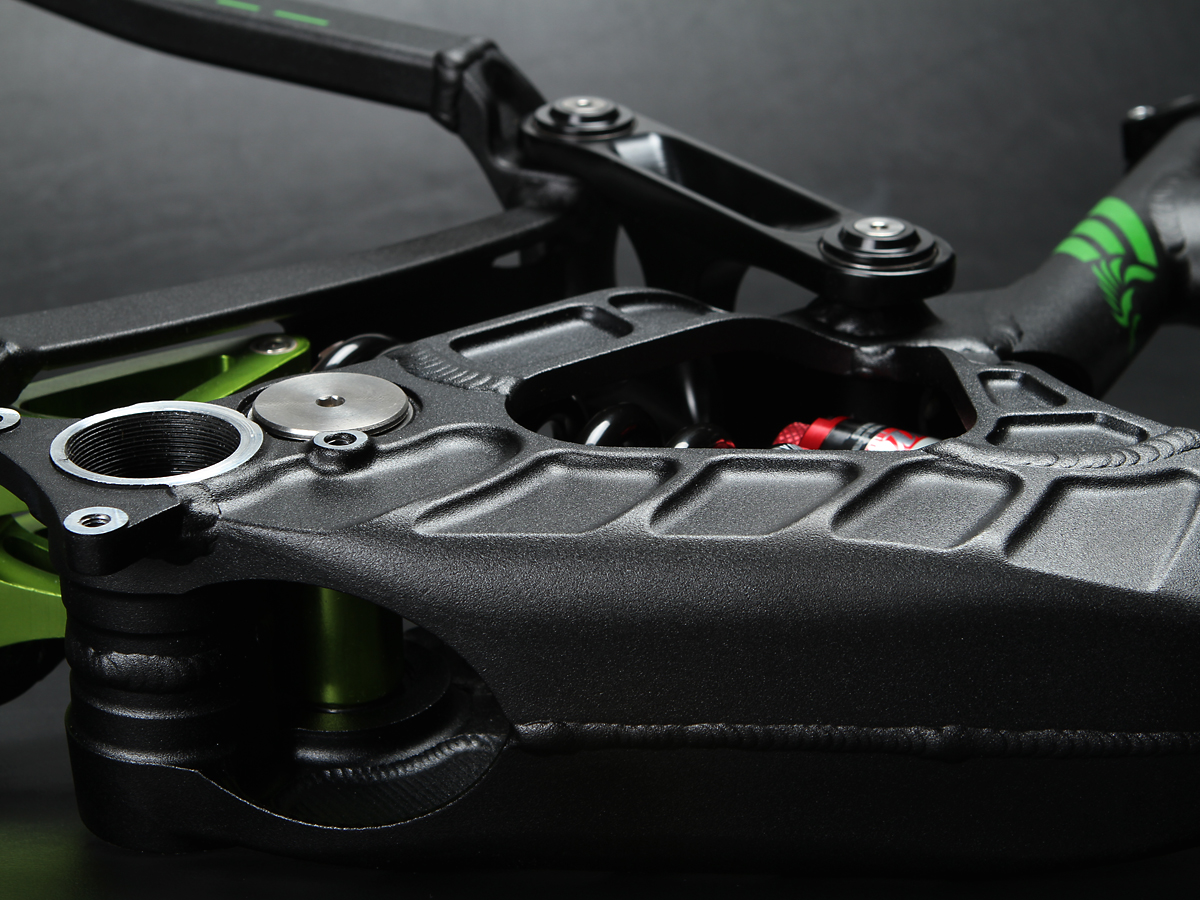
Banshee has been making bikes for about nine years now. They started off building hardtail and heavy steep angled North Shore skinny bikes. They began to develop a bigger range in bike throughout the years and began branching more into the cross country and all mountain segments.
In about 2005-2006 Banshee hooked up with Keith Scott who was working on his Master's Thesis. What he outlined for that paper would come to be know as The Banshee Legend. This bike was put into testing for about 4 years. Over 70 frames were handed out around the world and the bikes where ridden hard and put away wet.
After gathering all the riders input and fine tuning the design and making alterations it was ready for production. The Banshee Legend MKII was released to the public in 2009. It was low, slack, light and ate up rough terrain just what the general downhill population had been asking for.
Going over the various suspension designs that could be used to build Banshee's first World Cup level race frame they decided to go with a slightly altered VPP design. This would give the benefits of less pedal bob from chain stretch along with still having a fairly active suspension system. Check out Keith's Thesis at the bottom of the page to learn more about The Banshee Legend MKII design process.
2010 Banshee Legend MKII Build
- Frame Banshee Legend MK II Large
- Fork Manitou Dorado Pro
- Rear Der. Shimano M810 GS Saint
- Shifters Shimano SLX
- Crankset Shimano Saint 165mm 36 Tooth
- BB Shimano
- Chainguide E Thirteen LG-1
- Cassette SRAM PG 970 11-26
- Chain SRAM PC 951 9sp
- Brakes Formula K24 ORO
- Brake Levers Formula
- Bars Easton Havoc Low 31.8
- Stem Twenty 6 F1 Stem
- Cane Creek Angleset
- Pedals Twenty Six Prerunners
- Seatpost Thomson Elite
- Saddle WTB Devo carbon Team
- Wheels WTB Laserdisc DH 20mm F and 12mm by 150mm rear.
- Tires WTB Dissent DH F/R Kenda DH tubes
We received the frame in a nice box that had the Legend’s entire attribute on it. The first thing I noticed upon opening the box was the excellent finish of the frame. It had very nice welds and looked very polished and well thought out. Banshee had people there checking frames during production to make sure they were within spec.
We assembled it and put it up on the scales. With the above list and DH tubes it came in at 40lbs even with pedals. Not bad considering it is a large frame. All the parts went in easily and assembly was a standard affair with no issues. We put The Cane Creek -.5 Angle cup in making our test bike HA 63.3 degrees. It was plenty slack and low as is. In fact for tight and twisty areas I would suggest the 0 degree or even flipping the -.5 the other way to be 64.3 degrees instead. Keep in mind this is personal preference.
Features
- 8" (203mm) travel
- All performance characteristics have been painstakingly and carefully scrutinized to make this a single purpose world cup level race bike. The goal was to make one of the fastests race bikes regardless of cost or time it took.
- Over 4 years in development - was the design engineers [Keith Scott] thesis at Durham University to get his Masters in Mechanical engineering.
- 4 Prototypes ridden in world cups and world championships. Its first ever race brought home the 2008 Pan American Championship.
- 60 Preproductions of the Legend MkI were ridden and tested on the world cup circuit, national level races, and regional competitions all across the globe to gain feedback in over 4 race seasons in different terrains and conditions, from a varied skill level of riders; 12 of which were also engineer/racers that gave valuable input. Everything was on the table to modify, change or scrap and many things were as it developed into the MkII version
- Tuned virtual pivot design includes an anti-sag component under heavy pedal acceleration, and a minimal amount of tuned-in squat so under hard braking it helps balance the bike as the fork starts to dive thus letting the bike go into corners fairly level.
- All CNC'd parts are forged first for optimal strength to weight ratio.
- Hydroformed 7005 butted aluminum tubes putting the strength were it needs to be. All hand welded, aligned multiple times between heattreats before assembling, with 100% final quality checks by either Keith or Jay.
- The "canoe" includes hardpoints for shock basement, mainpivot, and seattube pivot creating an incredibly light but very strong and stiff area where the "business" happens
- Easy access to all the shock dials for quick changing of settings.
- Titanium pivot hardware for strength and lightness.
- All top of the line full compliment bearings, don't just make the suspension "buttery" smooth but more "slippery" smooth.
- We've worked with all the major shock manufacturers to ensure our suspension kinematics work perfect with the shocks standard tunes right out of the box. However for maximum performance some shock manufacturers will tune to your weight, terrain, and style of riding and we have provided our suspension rates to most shock manufacturers and can do so for your favorite tuning center if they send us an email.
- Lowest center of gravity and low BB height helps cornering stability.
- Centralized weight for stability in the air.
- Internally ribbed seat and chainstays for increased stiffness.
- 1.5 headtube so you have flexibility in headset cup choices.
- 12x150 Maxle for quick tire changes.
Geometry
Ian W
The first trail I brought the bike out on is the short rock filled one in town. It has rounded rocks ranging from golf balls to waist high the whole way. The first thing I noticed was the bikes stiffness. It was stiffer than most of the bikes we have had on test. I didn't detect any flex in the linkage or rear triangle. I adjusted the suspension to my liking running it with little LS compression and a faster rebound. Most of the trails we have are rock gardens so the fast rebound helps. The spring Banshee suggested for the Manitou Revox shock was 50 lbs to heavy. I ended up going to a 400 lb spring instead.
Once the suspension was dialed I did some runs. The bike handled the rough rocks pretty well. It was not as smooth as The Jedi but more so than the TR450. The rear end stayed active on the brakes and while pedaling. Although the bike is low and slack I had no issues pulling up and off drops or hopping over obstacles in the trail. I managed to mash a few rocks upon landing and the bike absorbed the impacts pretty well.
The next trail I brought the bike on is very high speed. Hitting 30+ MPH is pretty easy in parts. It is also rocky but is double track for a majority allowing for more line choice. I noticed how stable the bike felt at speed thanks in part to it's HA and BB heights. It felt very comfortable bouncing over the sharp rocks at "race" speeds. This trail is more open than the first and the bike smoothed out the trail more as the speed increased.
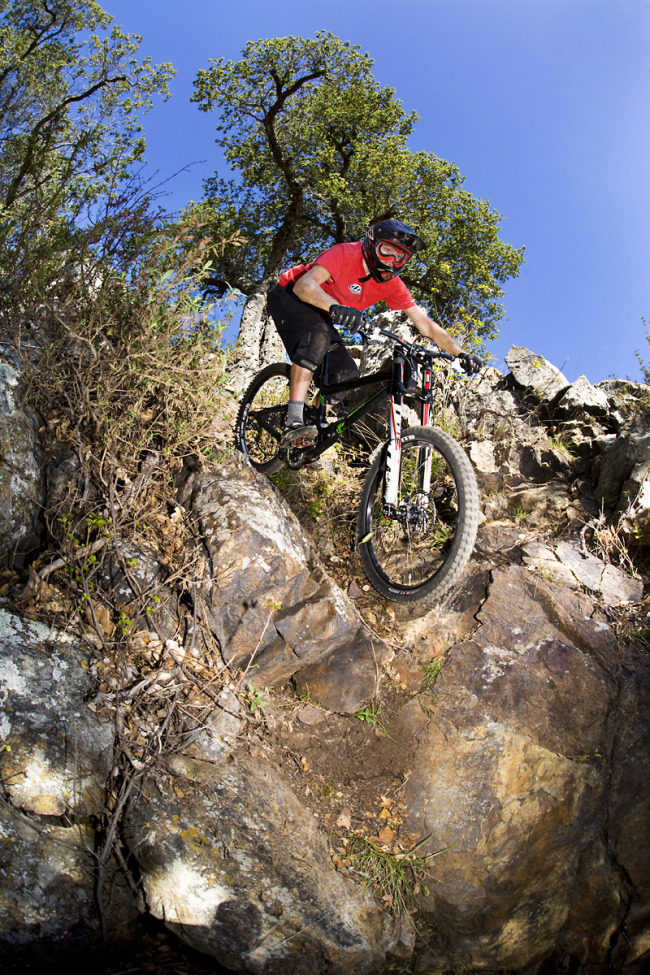
There are many corners lower down on the trail when it turns into single-track. There are fewer rocks on this section of trail. The Banshee needed some body English in the turns, weighting the front-end makes it stick. It takes a little more rider input that some other bikes that are not as raked. The bike cornered well once I got used to leaning over the bars a tad bit more. Jumping came as second nature to the bike it did it easily with no weird attributes. Hopping off rocks to clear large groupings of others further down the trail was easy to do. This trail is all natural with small water crossings that people have added dirt onto to create small doubles out of that the bike could either manual over and through or jump over just as easily.
One of the last trails I brought the bike onto is a rock filled trail that is very long and drops almost 4000 vertical feet located south of us. The rocks on this trail are big and sharp. This trail is a good indicator of how well a bike's suspension can handle multiple impacts on rocky terrain. The Banshee handled the rocky chunder pretty well. It is not as smooth as the Jedi or say maybe the V-10 was down the same trail. It was easy to change lines with when needed. I would consider the Banshee a very competent descender. You are not going to find a race course with this many rocks in it and it felt very comfortable mashing it ways through the rocks.
Banshee Legend 2009 from AntonCor on Vimeo.
Banshee Legend Mk II from Aaron Larocque on Vimeo.
Strahan Loken riding his new Banshee Legend Mk II
check out more videos like this @ facebook.com/aaronlarock and click like to stay connected!
Paul in the Fall from Nic Genovese on Vimeo.
A short video of Paul Genovese riding his Banshee Legend MKII on a few local Fernie Trails. Filmed and Edited by Nic Genovese.
Keith riding his Banshee Legend MkII from Keith Scott on Vimeo.
Keith got out on his Legend for the first time in 8 months (due to work, snow and travel) to test out the custom tune of an Elka Stage 5 shock. He was also riding in a totally new location to him, so it was a fun day of firsts.
Luís "Rukkus" Ribeiro from Mauricio Matos on Vimeo.
Rukkus riding his Banshee Legend MK II somewhere in Portugal.
Shot using a couple of Canon 1D Mark IV, Canon L lenses, 3 GoPro HD and a bunch of accessories from Zacuto, Genus, CobraCrane, Glidetrack and Marshall.
Music: Eric Prydz - Pjanoo [Radio Edit]
Conclusion
Overall the Banshee did what Keith and the boys intended it to do. Creating a low Center Of Gravity with a slack head angle, using a suspension system that is efficient at pedaling while still being able to handle rough terrain. Everything is relative when it comes to bikes. Saying you ride a 62-degree HA bike isn't going to land you 10 UCI Champ medals. Does everyone need a slack bike like that? No not at all. It makes some courses more stable and easier to ride but you may sacrifice tight and twisty performance in favor of high-speed stability.
That being said using a 1.5 head tube allows the rider the option of using headset cup to either slacken or steepen the Banshee frame. Being a 63.8 stock we ran -.5 cup in our frame most of the time. If you lived in a tighter area running the cup the opposite way would get 64.3 degrees. The bikes strong points would be stability, stiffness, tracking, and reliability and bump compliance.
The Legend MK II took a little more body English through the turns and to get it up and over obstacles at lower speed. The bike was just fine staying on the ground and running over rough terrain as opposed to skipping over it all. It can be ridden either way and feels smooth while doing it.
Banshee did a lot of pre release testing with the Legend MK I and it shows in the MK II version of the bike. There is little to complain about with the bike as it is. The suspension did well in the rough and handled pedaling well. The stoutness of the frame can be felt while leaning it over in rough rock section it is one of the stiffest bikes I have tested in that regard.
By all accounts the frames are bulletproof going years under very fast riders with no issues whatsoever. This is a frame that can be purchased and raced on for multiple seasons. Our bike was 40 lbs as built. We did not use the lightest kit out there and getting one down to low 37's should be a snap. We ran a Revox on ours and have learned after riding it that the Fox RC4 may be the better shock to choose from between the two.
Overall the Banshee Legend MK II was an awesome bike. I would highly recommend one to a friend and it would be one of the bikes I will consider for my own stable down the road. Having a bike that gives you confidence and will last through whatever you put it through season after season can be hard to find these days. The Legend achieves that and more good job guys!
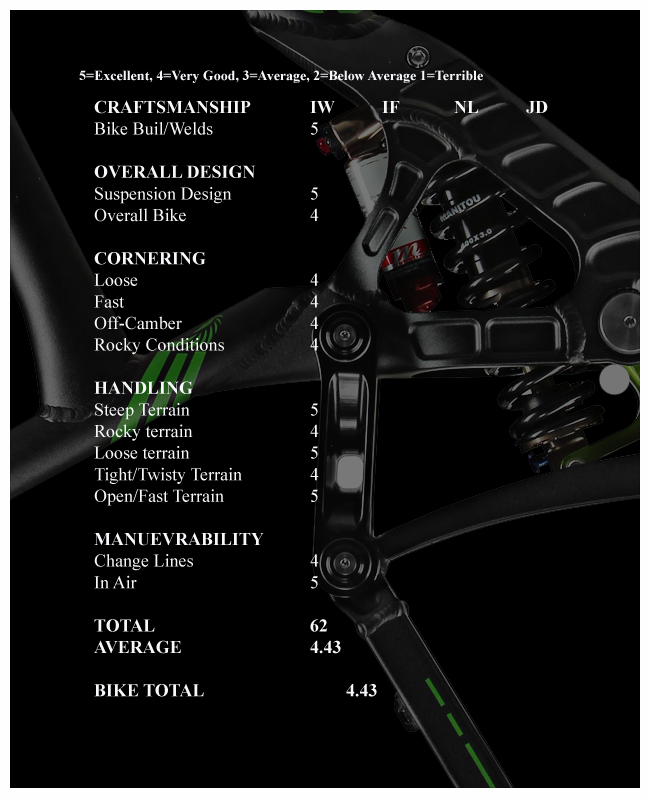
Keith Scott's Take On The Banshee Legend MKII
"After 4 year of development, born from my own personal masters in engineering thesis, the Legend is a single minded pure bread DH race machine.
This project started out way back in 2005 as a linkage dynamics and stress analysis project, it has grown massively and been refined over the years with multiple design improvements. The majority of those redesigns were as a result of rider feedback.
We started with the Legend MkI and didn't just send this bikes out to a couple of our team riders. Oh no... we sent them to over 70 riders in total who raced DH from regional to world cup level on 5 continents, over 4 riding seasons, before we were even ready to start selling them to the public. Every test rider provided feedback and suggestions as well as ongoing performance information to help me make this bike the best it could be. This unprecedented level of testing, that I don't believe has ever been done before in the bike industry, has been invaluable in the development of the Banshee Legend MkII. I've taken on board all the feedback and ideas and funneled them in to the MkII design.
We decided early on that when you want to start racing only one thing should be your motivation and that is to win. There was to be no compromising on cost, it was to take as much time as needed, and we would do whatever was necessary to make sure we had a one of the fastest DH race bikes ever made. The goal was not selling as many as we could... this is the wrong reasons to build a DH Race bike - the only reason to ever build a race machine is to win.
The Legend MkII comes stock with the finest INA large diameter deep-grove bearings, and full titanium pivot hardwear to give maximum performance for minimal weight. The fully forged shock basement has been designed to offer strong yet light foundation for the frame, centralising the weight balance around the BB. The suspension has been designed to work optimally for aggressive DH racing, and remains fully active under hard braking and pedaling.
The Legend has possibly the lowest center of gravity of any DH race bike, which makes the bike more stable, especially while railing round corners. This combined with the structural stiffness of the frame through use of internally ribbed rear triangle, fully forged sections, and hydroformed tubing, makes the Legend a very accurate weapon on the DH course. The Low BB, and slack head angle, combined with the initially rearward axle path give the Legend MkII superior stability at speed, as well as great square edge bump absorption. It is a true point and shoot machine that will give you maximum traction and control over even the roughest lines, so that you can brake later and go round the next corner faster, getting to the bottom of the course quicker.
I feel that I have put everything I had to give into the Legend MkII and after 5 years to get to this point its now time to see what racers the world over think of what I've labored to acheive."
Keith M Scott's Masters Thesis
Design a New Style Suspension Linkage and Frame for a Full Suspension Mountain Bike for Banshee Bikes





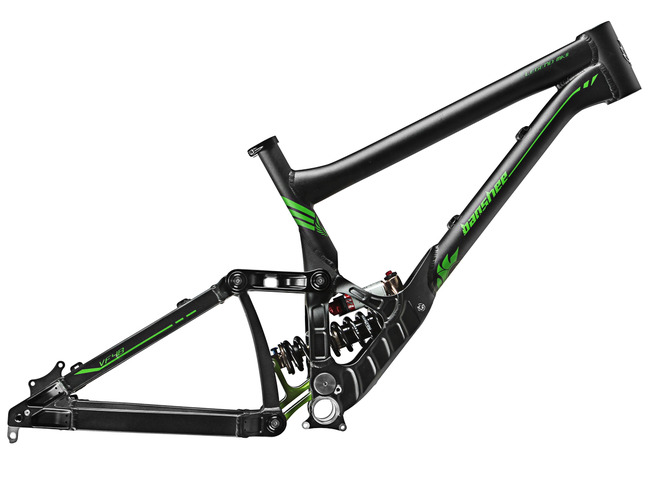
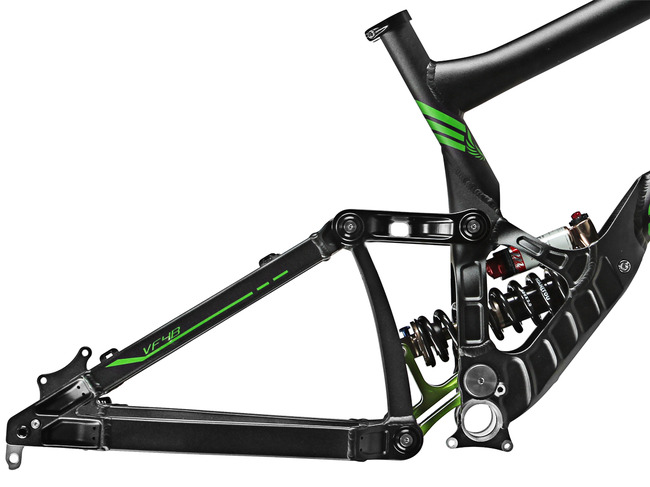
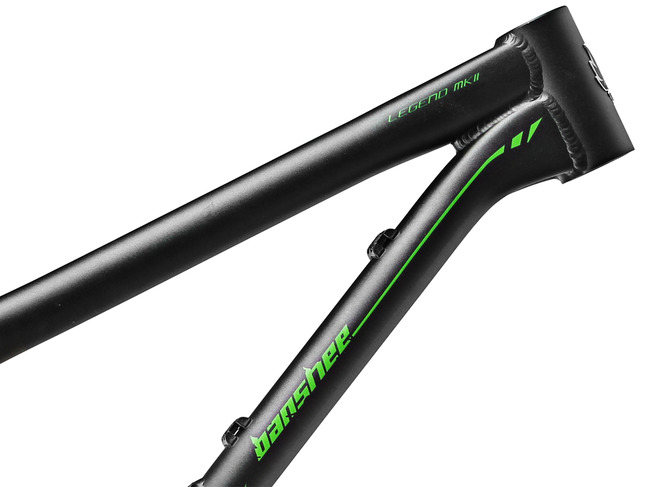
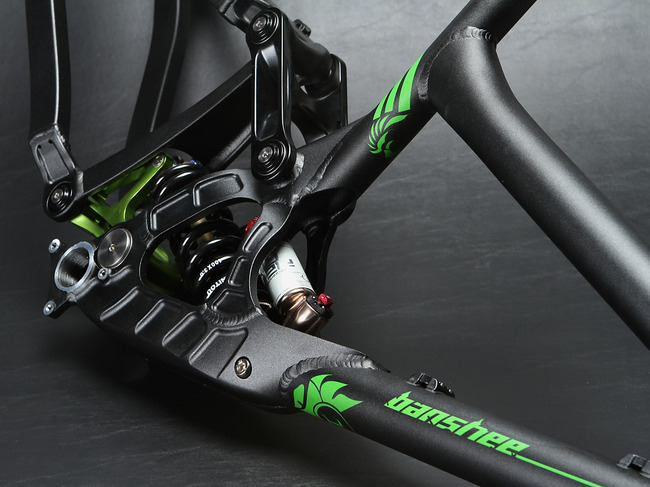
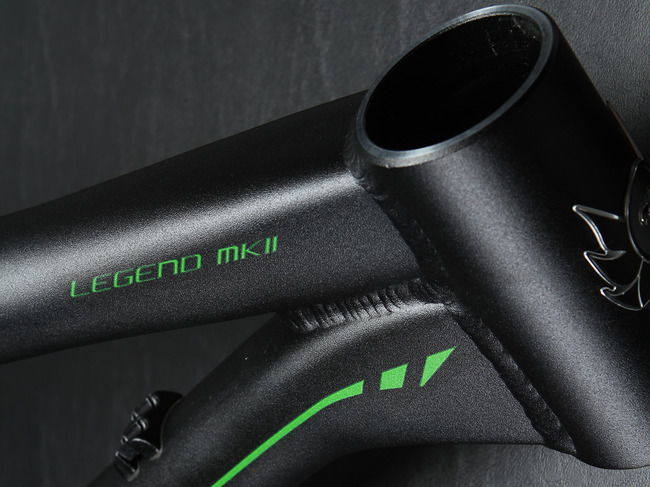
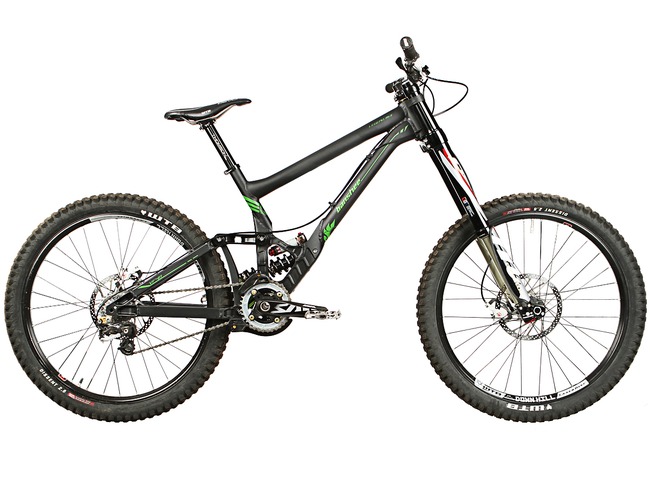
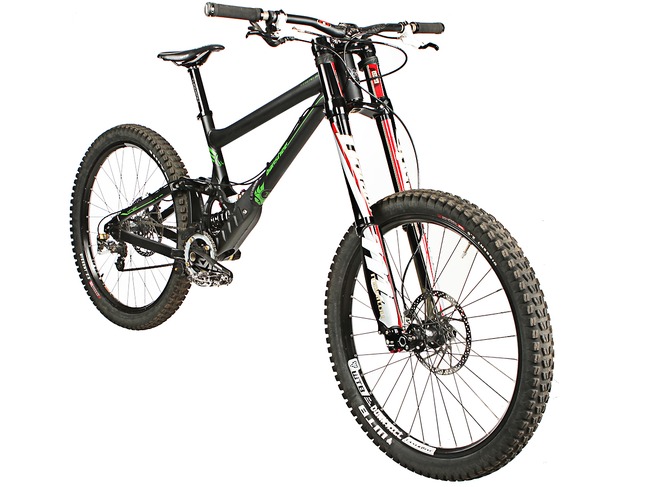
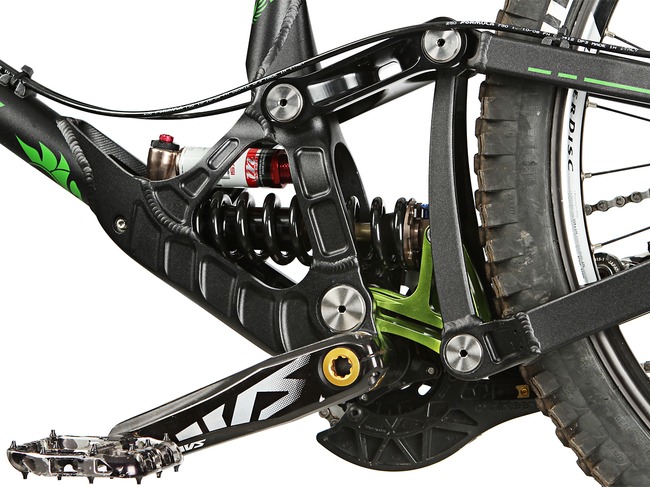
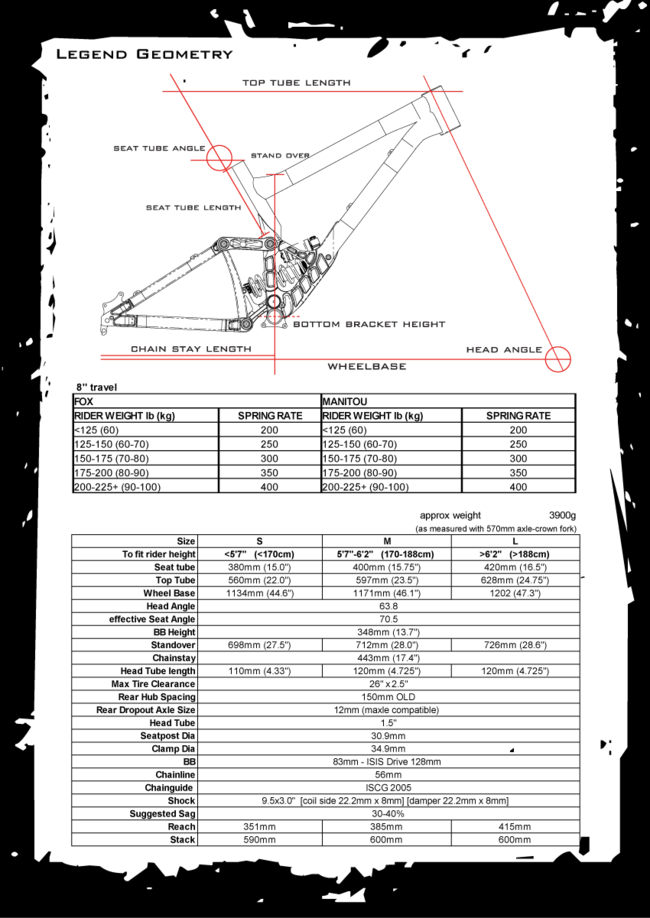
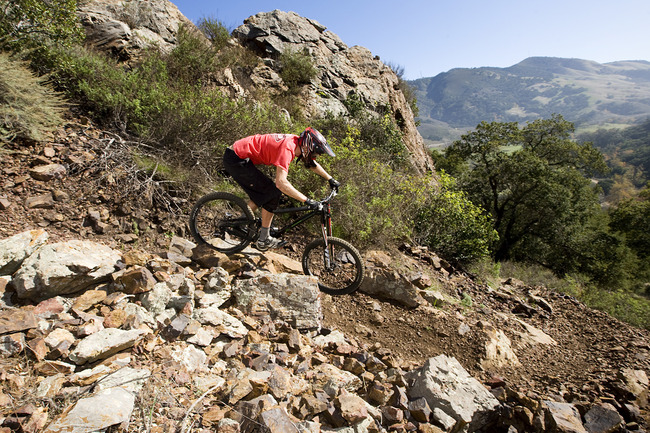
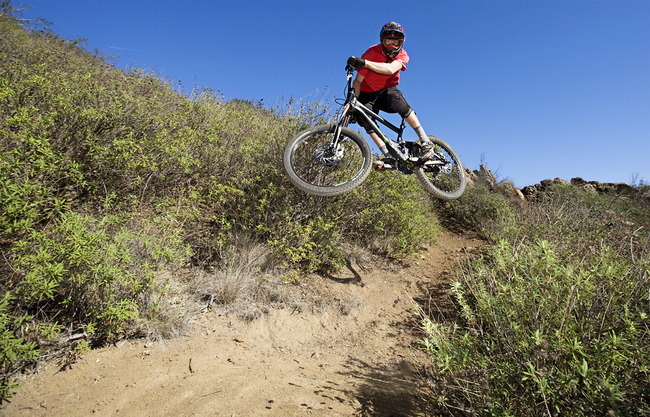
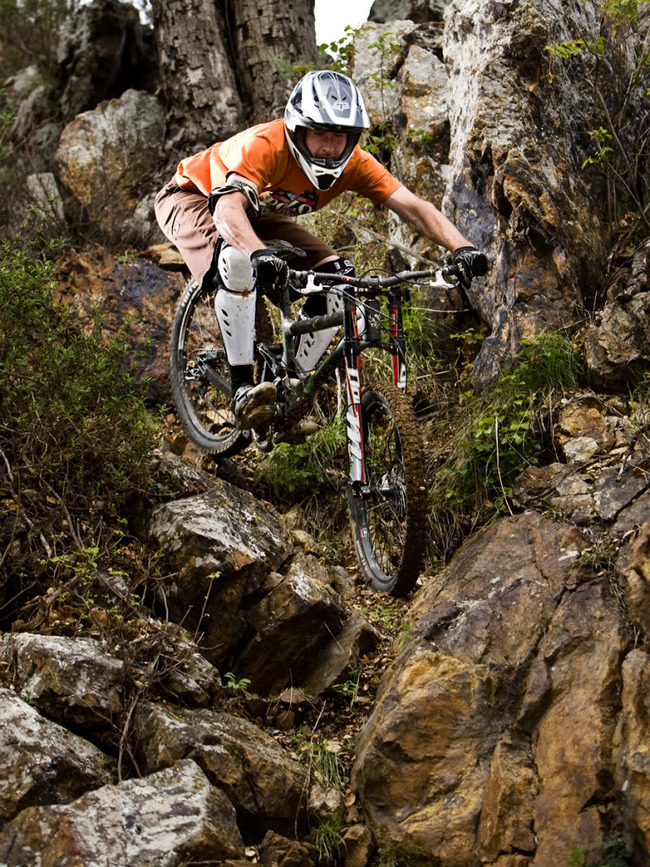
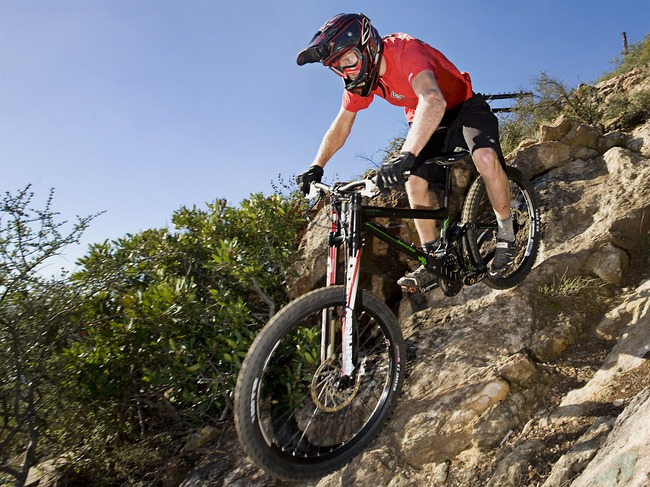
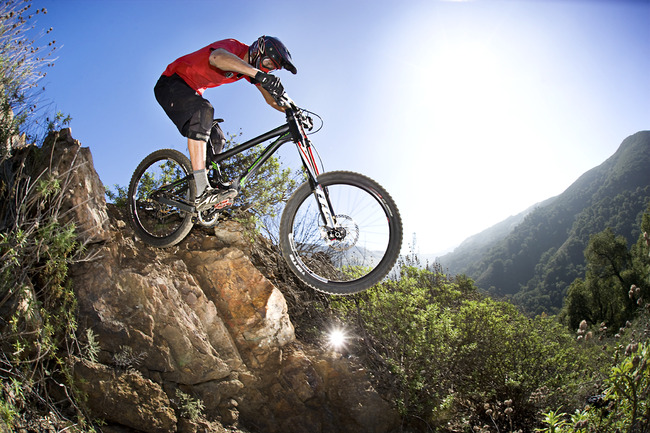
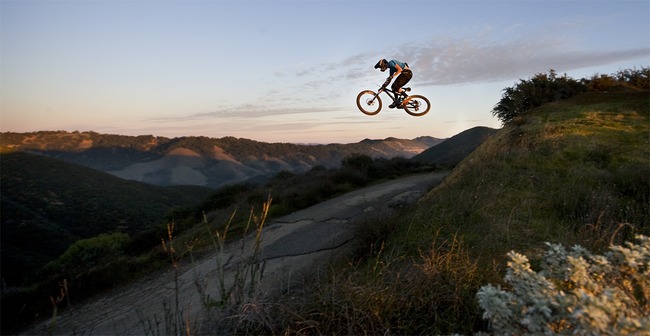
Reader Comments